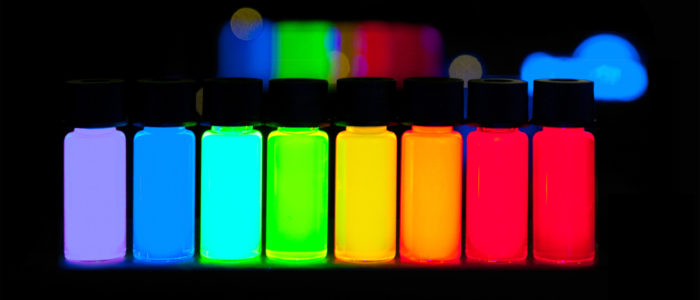Who here is a superhero fan? I’m a huge Marvel fan nowadays, but I grew up watching Justice League with my dad.
I always loved watching Superman and his pals beat up bad guys. Clark Kent’s alter ego popularized the superhero genre and became a cultural icon of the United States. His immense strength and power inspired the imagination of young 10-year olds everywhere.
In 1911, Heike Kamerlingh Onnes discovered something that would inspire that same boyish excitement in scientists everywhere: superconductivity. Just as Superman could defy the laws of gravity, superconductors defied the laws of electricity, forcing us to re-evaluate our fundamental understanding of electronics.
Consider a current passed through a wire. The current’s flow will be limited by the wire’s resistivity. Impurities, molecular vibrations, and nuclear interactions will cause the system to lose energy as heat, a process known as Joule heating.
Imagine the electrons as a pack of unruly toddlers; you want them to line up in a straight line, but the second you look away, they disperse, putting their grimy little hands all over the walls and mirrors and anything they can reach.
In this scenario, every time a child touches a wall, some of humanity’s precious energy is lost to Joule heating. This energy, which could be used to power our homes and devices, instead uselessly heats our electric wires and fuses, often with damaging consequences.

The consequences of Joule heating give electrical engineers all kinds of headaches. Wires must be built thick enough to disperse collected heat without breaking, limiting their speed and efficiency. Power outages are often caused by electrical fuses damaged by excessive heat.
Now, what would happen if we induced a current in a superconducting wire?

The answer: Joule heating would not occur, and the current would keep going forever. Decades, at least.
The effective resistance of a superconductor is zero. Current can pass through superconducting materials with no energy loss whatsoever. If this technology were to be implemented in the world today, the efficiency of modern electronics would skyrocket, to the tune of massive energy savings.
Unfortunately, common superconductors only function at temperatures near absolute zero. Most superconductors require liquid helium cooling to reach their critical temperature, the temperature at which materials begin exhibiting superconductivity. These temperatures are commonly at or near absolute zero.
It’s incredibly expensive to maintain systems at such a low temperature. So, in order for superconducting technology to reach its full potential, scientists must create materials that can exhibit this remarkable property at or near room temperature.
We’ve had a hundred years to spend on this problem, and we’re well on our way [1]. But we’ve still only scratched the surface of what superconductors are capable of.
Table of Contents
Conductivity on the Quantum Scale: Happy Little Electron Houses
To better understand what makes superconductivity special, let’s take a step back and discuss conductivity in general.

Conductivity describes the ease with which a material may carry electrons. The conductivity of a material is a product of its structure and is normally determined by the availability of “energy states” in which an electron may exist.
You’ve probably heard before that certain metals, such as copper, conduct electricity very well. This is because of the nature of metallic bonding. Bulk metals can be considered a fusion of a very large number of atoms, which are all chemically bonded together.
Each of these atoms contributes orbitals, defined spaces in which electrons are allowed to exist. You can think of these orbitals as tiny “electron houses.” The laws of quantum mechanics make a very strict landlord; electrons are only permitted to live in these specific houses and nowhere else.
Each atom in the bulk metal contributes orbitals, or houses, to the molecular orbital configuration, or the “neighborhood.” This results in a huge band of houses with similar energies, known as “degenerate electronic states.”

Electrons are very frugal, and they always buy the cheapest house available. So, the electronic energy states fill with respect to their energy. Low-energy states are filled first, while the states at the highest energy are filled last or remain unoccupied (Aufbau Principle).
However, since these houses are degenerate (meaning they have nearly equal energies), the gap between the highest occupied molecular orbital (HOMO) and the lowest unoccupied molecular orbital (LUMO) is very small. In other words, the resulting electronic configuration has a low band-gap, or a low HOMO-LUMO gap.
Subsequently, it takes electrons very little energy to travel between their “houses,” permitting their movement along the bulk material. Electrons can pass from one empty orbital to another quite easily
Q: Why is diamond an insulator, and not a conductor?
A: Diamond is an insulator because all of its contributed orbitals are filled. Think back to our neighborhood analogy. What happens if all of the houses are full of electrons? There’s no empty houses for electrons to move into, and the electrons cannot move around.
Diamond’s crystal structure consists of quadruply bonded (sp3 hybridized) carbon atoms with full octets of electrons. There are very few empty houses to be found in a diamond molecular orbital neighborhood, and the ones that do exist are very expensive… I mean, high energy. The HOMO-LUMO gap in diamond is very large, making diamond a poor conductor of electricity.
Instead, diamond has a very large resistivity, which is defined as the inverse of conductivity (R=1/C). The resistivity of diamond is 1018 ohm-meters, compared to copper’s 10-8. Such a large resistivity is characteristic of an electronic insulator.

For more info on conductivity and band-gaps, see our article about graphene, the world’s fastest conductor of electricity.
Superconductivity Explained: Properties and Characterization
Now that we have a better understanding of conductivity, how are superconductors different?
Superconductivity describes a state of zero resistance, achieved in certain metals at temperatures near absolute zero (less than 15 Kelvin).
Because their resistance is zero, electrons moving in superconducting materials do not lose any energy whatsoever. Imagine if, instead of walking from house to house, electrons could teleport from one place to another without doing all that troublesome walking. Currents begun in a superconducting loop will continue indefinitely with zero energy loss.
The discovery of superconductivity in 1911 by Dutch physicist Heike Kamerlingh Onnes was a revelation. Prior to its discovery, no human had ever dared dream that such a phenomenon may exist. We had no prior concept or thought that led to superconductivity. In fact, this phenomenon was discovered on accident, simply as a byproduct of the invention of better cooling technologies, such as the use of liquid helium (which, not coincidentally, was also a discovery by Onnes).

Today, superconductors are studied via cryogenic magnetometry, commonly using a Superconducting Quantum Interference Device (SQUID). Superconducting samples are cooled via a controllable temperature ramp and passed through a series of magnetic loops to measure their response to an external magnetic field.
The temperature efficacy of a superconductor is reported in terms of the critical temperature Tc, at which 90% of the maximum superconducting response is attained. Most superconductors possess a Tc of less than 15 Kelvin (-263 degrees Celsius), but some modern superconductors can exhibit a Tc upwards of 200 K [1]. For reference, room temperature is about 298 K, or 25 degrees Celsius.
Superconductivity in Theoretical Physics: BCS Theory
On an atomic level, what makes superconductivity work? This question remains the subject of contentious debate.
Superconductivity is commonly understood in terms of the “BCS theory,” which was set forth in the 1950s by John Bardeen, Leon Cooper and John Schrieffer. The theory was predicated on Cooper’s 1956 paper:
Cooper, L. N. “Bound electron pairs in a degenerate Fermi gas.” 1956. Phys. Rev. 104, 1159.
where he describes the energy states of electrons that were bound together. These bound electrons, or “Cooper pairs,” play a critical role in superconductivity. Cooper’s paper asserts that electrons traveling in Cooper pairs are slightly energetically favored over their individual components.
Because any thermodynamic system naturally gravitates to its lowest available energy state, physicists expect electrons to “buddy up” into Cooper pairs at low temperatures.
But if, as the saying goes, “like charges repel,” how do electrons pair together? And how do Cooper pairs relate to the electrons’ ability to travel in a superconductor?
These two questions actually have the same answer. Electrons overcome their electromagnetic repulsion and travel through a superconductor via electron-phonon coupling, a phenomenon describing a coupling between electrons and “phonons” – vibrations in crystal lattices.
All superconductors are crystalline solids with a repetitive and highly ordered atomic structure, or “lattice.” The passage of one electron through this lattice can cause charge perturbations, making passage favorable for the other electron.
In this way, Cooper’s electron pairs are able to bypass atomic vibrations, the major contributors to electrical resistance, and “sling-shot” their way along a superconductor. This phenomenon may only occur at extremely low temperatures, at which these vibrations are small in magnitude.
Sadly, BCS theory fails to explain any superconductor operating at a temperature above 40 Kelvin, at which molecular vibrations should make Cooper pair travel unfavorable [2]. In fact, we still don’t have a solid theoretical explanation for modern high-temperature superconductors. High-temperature superconductivity remains a pressing issue for theoretical physicists today.
The Meissner Effect: Quantum Superconducting Levitation
If you didn’t already know, magnetic forces result from moving charges. As we’ve already discussed, charges can move in a superconductor with no resistance.
As it turns out, their lack of resistance to electrical flow gives superconductors some crazy magnetic properties. Applying a magnetic field to a superconductor induces a current that creates an equal and opposite magnetic field.

This phenomenon, called the Meissner Effect, makes superconductors perfect diamagnets. Diamagnets do not normally exert a magnetic field; however, applying an external field to a diamagnet will generate a field that is opposite in direction. Superconductors are perfect diamagnets, or superdiamagnets, because the induced field is also equal in magnitude to the applied field.
However, the magnetic strength of a superconductor is not limitless. The maximum current that can be induced by an externally applied magnetic field is known as the critical current. This measure defines the maximum strength of the Meissner Effect for any given superconductor. The critical current depends primarily on the crystal structure of the superconductor in question.
Meissner induction in superconducting materials is responsible for the phenomenon of superconducting levitation. This phenomenon can be very useful in many of the applications of superconducting materials. Read on to find out how!
Superconductors Today and Into the Future

Even with the temperature-derived limitations of modern superconductors, these materials have found many uses in high-voltage systems. Superconductors are commonly employed in high-voltage electromagnetic railguns (see above). You’ll also find superconductors in the magnetic resonance imaging (MRI) machines found at most hospitals.
Advances in superconducting science have led to the development of Josephson junctions, consisting of two superconductors separated by an insulating material. In addition to their applications in magnetometry, precision metrology, and in infrared cameras, Josephson junctions have been used to construct high-efficiency logic gates, increasing the power efficiency of high-performance computers. Supercomputers generate immense amounts of heat; if you’ve ever visited a high-performance computing facility, you probably noticed that it takes an entire building’s worth of cooling and environmental control systems to keep them running. It is estimated that superconducting materials may improve the power efficiency of these devices by a factor of 500 [3].

Furthermore, Meissner levitation is employed for high-speed transport in the “maglev” trains found in urban areas of Japan and China. Electromagnetic propulsion using superconducting materials is currently being investigated for electromagnetic rocket propulsion, although air resistance at low altitude has prevented this technology from “taking off” quite yet.

The use of superconducting thin films for liquid hydrogen cell encapsulation via the Meissner effect is currently under investigation at Lawrence Livermore National Lab (LLNL [4]).
At LLNL, the National Ignition Facility (NIF) is used to conduct experiments that inform our knowledge of modern weapons systems, ensuring the effectiveness of the United States’ nuclear stockpile without violating treaties prohibiting live weapons testing. At NIF, liquid hydrogen fuel cells are compressed in a small cylindrical container called a “hohlraum” and irradiated with the strongest laser system in the world. This process, known as inertial confinement fusion (ICF), generates high energy density systems similar to those found in nuclear explosions.
Currently, plastic holders called “tents” are used to suspend ICF target cells for ignition. However, these tents have been shown to interfere with the stability of ICF implosions [5].
Using a superconducting thin film to levitate ICF target cells would eliminate the need for tents, significantly improving performance [5]. Incorporating a superconductor in this manner could potentially make NIF a more effective stockpile stewardship tool. Additionally, the removal of plastic ICF target cell holders could increase the energy yield of NIF’s laser-induced fusion experiments, possibly leading to a breakthrough for energy research.
Disclaimer: I currently work at Lawrence Livermore National Laboratory. All of the information in this article is unclassified, has been reviewed and released, and is publically available.

Concluding Thoughts
While superconductors are quite interesting and have many potential applications, their usefulness is still limited by their temperature dependence. Most superconductors require liquid helium cooling to even function, which is quite expensive.
Extensive research has been devoted to the characterization of materials exhibiting superconductivity at high temperatures. This research thus far has had very good results [1], illustrating the translative potential of this awesome technology for future applications [3-5].
And that’s all for now! Sorry I missed you last week, but I was busy taking my first tour of a graduate program. I’d like to give a shout-out to Rice University for taking me to a Brazilian steakhouse. That’s some serious bribery!
Superconductors are a really cool piece of technology that just might be ripe for a big “boom” some time soon, and I hope you enjoyed learning about them as much as I did.

Till next time!
References
- M. Somayazulu, M. Ahart, A. K. Mishra, Z. M. Geballe, M. Baldini, Y. Meng, and R. J. Hemley. “Evidence for Superconductivity Above 260 K in Lanthanum Superhydride at Megabar Pressures.” 2019. Phys Rev Lett. 122 (2)
- A. Mann. “High-Temperature Superconductivity at 25: Still in Suspense.” 2011. Nature. 475 (7356)
- L. Joneckis, D. Koester, J. Alspector. “An Initial Look at Alternative Computing Technologies for the Intelligence Community.” 2014. Institute for Defense Analyses.
- A. A. Baker, L. B. Bayu Aji, J. H. Bae, E. Stavrou, D. J. Steich, S. K. McCall, S. O. Kucheyev. “Vapor Annealing Synthesis of Non-Epitaxial MgB2 Thin Films on Glassy Carbon.” 2018. Superconductor Science and Technology. 31 (5)
- V. A. Smalyuk, H. F. Robey, C. L. Aiday, P. Amendt, et al. “Review of Hydro-Instability Experiments with Alternate Capsule Supports in Indirect Drive Implosions on the National Ignition Facility.” 2018. Physics of Plasmas. 25 (7)







